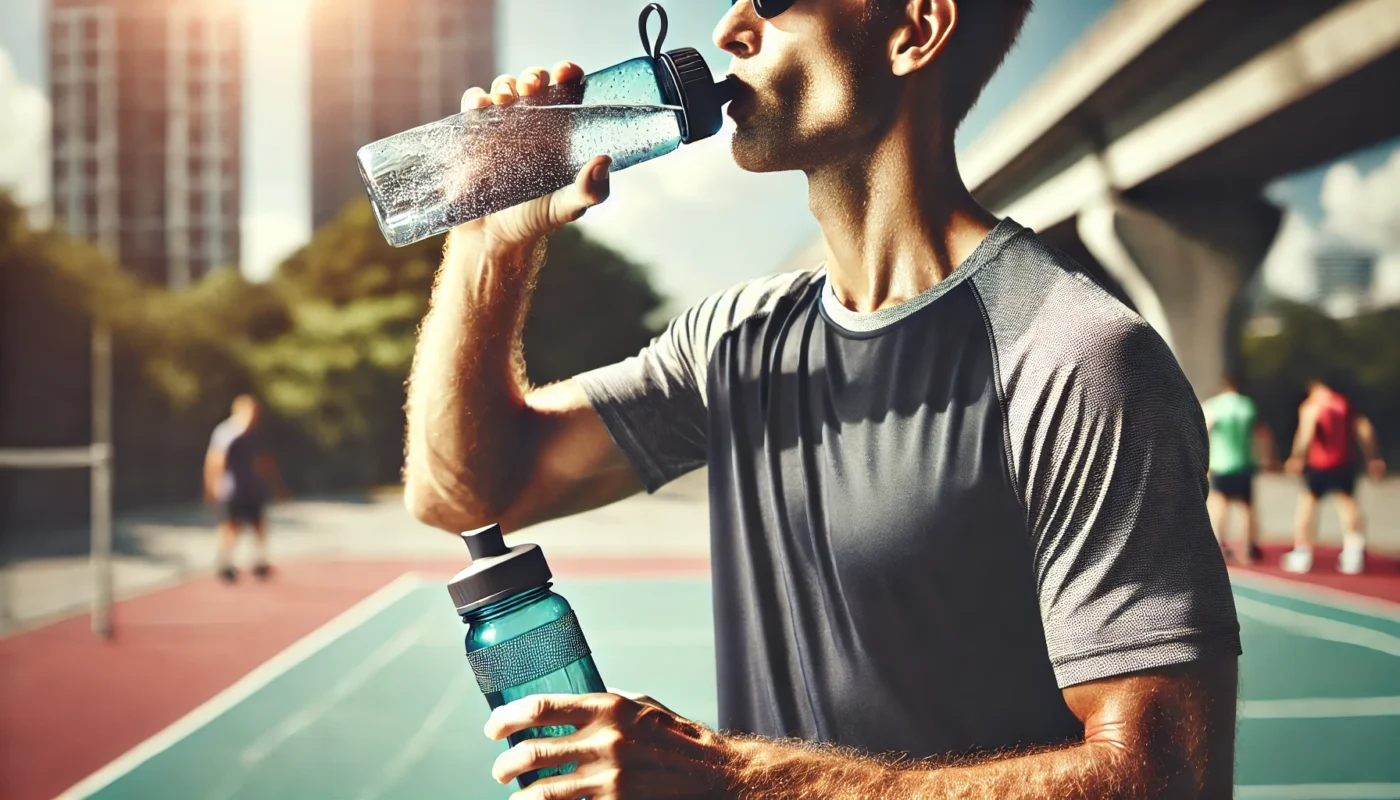Lowering A1C levels is not only crucial for individuals diagnosed with diabetes but also for athletes who aim to optimize their performance and overall health. The A1C test provides insights into average blood glucose levels over the past two to three months, offering a comprehensive picture of one’s metabolic health. For athletes, maintaining optimal A1C levels can significantly enhance endurance, recovery, and performance. This article will explore various strategies that athletes can employ to lower A1C, supported by scientific research and practical advice.
You may also like: Hormonal Balance: Transform Your Workout Strategy
Understanding A1C and Its Importance
What is A1C?
The A1C test, also known as the hemoglobin A1C test, measures the percentage of hemoglobin proteins in the blood that are coated with sugar (glycated). This test provides a long-term gauge of blood sugar control, reflecting average blood glucose levels over a two to three-month period. Understanding this measure is crucial for athletes aiming to maintain energy levels and prevent complications associated with poor glucose control.
Why A1C Matters for Athletes
For athletes, optimal A1C levels are not just about avoiding health issues; they are integral to maintaining peak physical performance. High A1C levels can lead to energy fluctuations, which impair endurance and recovery. Moreover, they increase the risk of developing diabetes-related complications, which can significantly affect an athlete’s career. Therefore, understanding and managing A1C is vital for both health and athletic performance.
The Connection Between A1C and Athletic Performance
Maintaining a stable A1C level helps in optimizing muscle function and recovery. Proper glucose metabolism is essential for energy production during physical activity. When A1C levels are within the target range, athletes are more likely to experience consistent energy levels, reduced fatigue, and enhanced performance. Furthermore, it contributes to the effective management of body weight and composition, which are crucial for many sports.

The Role of Exercise in Lowering A1C
How Exercise Impacts Insulin Sensitivity
Exercise enhances insulin sensitivity, which is the efficiency with which the body uses insulin to lower blood glucose levels. By increasing insulin sensitivity, physical activity helps cells absorb glucose more effectively, reducing blood sugar levels and, consequently, A1C. This effect is beneficial not only in the short term but also contributes to long-term metabolic health.
Types of Exercise Beneficial for A1C Reduction
Both aerobic and anaerobic exercises play a role in lowering A1C levels. Aerobic exercises like running, cycling, and swimming improve cardiovascular health and increase insulin sensitivity. Resistance training, on the other hand, builds muscle mass, which enhances glucose uptake by muscles. A combination of these exercises creates a comprehensive workout routine that effectively manages blood glucose levels.
The Importance of Consistency in Exercise
While the type of exercise is important, consistency is key to achieving and maintaining lower A1C levels. Regular physical activity, ideally spread throughout the week, ensures that the body continuously benefits from improved glucose metabolism. Athletes should aim for a balanced exercise regimen that includes both endurance and strength components, ensuring that they maintain their A1C levels effectively.
Effective Exercise Strategies for Athletes
Designing a Comprehensive Exercise Plan
Athletes should design their exercise routines to incorporate endurance training, high-intensity interval training (HIIT), and strength training. Endurance exercises, such as long-distance running or swimming, improve cardiovascular health and stamina. HIIT workouts are particularly effective in boosting insulin sensitivity and enhancing glucose metabolism, making them a powerful tool for lowering A1C. Strength training builds muscle mass, which increases the body’s ability to utilize glucose.
Integrating Flexibility and Balance Exercises
In addition to cardiovascular and strength exercises, incorporating flexibility and balance training is crucial. Activities like yoga and Pilates improve flexibility, prevent injuries, and promote relaxation, which can help in stress management—a factor that affects blood sugar levels. Balance exercises ensure stability and coordination, which are essential for overall athletic performance and injury prevention.
Monitoring and Adjusting Exercise Intensity
Athletes should monitor their exercise intensity and adjust it according to their fitness levels and A1C goals. Using heart rate monitors or perceived exertion scales can help in maintaining the right intensity. It’s crucial to gradually increase the intensity and duration of workouts to avoid overtraining, which can lead to elevated stress levels and negatively impact blood sugar control.

Nutritional Approaches to Lower A1C
Crafting a Balanced Diet for Optimal Performance
A balanced diet is foundational for managing A1C levels. Athletes should focus on consuming a variety of nutrient-dense foods, including whole grains, lean proteins, healthy fats, and plenty of fruits and vegetables. These foods provide essential nutrients that support energy levels and recovery, while also helping to regulate blood sugar levels.
The Role of Carbohydrates in Blood Sugar Management
Carbohydrates are a primary energy source for athletes, but their impact on blood sugar levels must be managed carefully. Choosing complex carbohydrates with a low glycemic index (GI) helps prevent spikes in blood sugar levels. Athletes should pair carbohydrates with proteins and fats to slow glucose absorption, ensuring sustained energy release and stable blood sugar levels.
Timing and Frequency of Meals
Eating regular, balanced meals and snacks throughout the day can help maintain steady blood sugar levels. Athletes should avoid long periods without food, which can lead to blood sugar crashes. Strategic meal timing, especially around workouts, can optimize performance and recovery while supporting A1C management.
Importance of Hydration in Blood Sugar Control
Hydration is a crucial yet often overlooked component of blood sugar management. Dehydration can lead to higher blood sugar concentrations, affecting A1C outcomes. Athletes should monitor their fluid intake, ensuring they are well-hydrated before, during, and after exercise. Electrolyte-rich fluids can be beneficial, especially during intense or prolonged physical activity.
Holistic and Alternative Approaches
Stress Management Techniques
Stress management is vital in maintaining optimal A1C levels, as stress hormones can affect blood sugar control. Mind-body techniques such as mindfulness, meditation, and yoga can help reduce stress and improve mental well-being. These practices enhance relaxation and focus, supporting both metabolic health and athletic performance.
Exploring Herbal and Nutritional Supplements
While some herbal supplements like cinnamon, fenugreek, and berberine have shown potential in lowering blood glucose levels, their use should be approached cautiously. Athletes need to consult healthcare professionals before incorporating supplements to avoid potential interactions with medications or adverse effects. Research-backed supplements can be a complementary strategy in managing A1C.
The Role of Sleep in Metabolic Health
Quality sleep is essential for overall health and metabolic function. Poor sleep can lead to insulin resistance and increased blood sugar levels. Athletes should prioritize good sleep hygiene, aiming for 7-9 hours of restorative sleep per night. Adequate rest supports recovery, hormone balance, and effective glucose metabolism, contributing to lower A1C levels.
Monitoring Progress and Adjusting Strategies
Importance of Regular Health Assessments
Regular health check-ups are crucial for monitoring A1C levels and adjusting strategies as needed. These assessments provide insights into blood glucose control and overall metabolic health, allowing athletes to tailor their exercise, nutrition, and lifestyle approaches effectively. Working closely with healthcare providers ensures that athletes remain on track with their health and performance goals.
Utilizing Technology for Continuous Monitoring
Continuous glucose monitoring (CGM) devices offer real-time insights into how different activities and foods affect blood sugar levels. These devices can help athletes understand their body’s responses and make informed decisions about their training and dietary strategies. By using technology, athletes can optimize their routines for better glucose control and enhanced performance.
Adapting Strategies Based on Feedback
Athletes should be flexible and willing to adapt their strategies based on feedback from health assessments and CGM data. Adjusting exercise intensity, dietary choices, and lifestyle habits in response to these insights ensures that they continue to effectively manage their A1C levels. A proactive approach to monitoring and adaptation is key to sustained success in managing blood glucose.
Conclusion
Lowering A1C is a multifaceted process that involves a strategic combination of regular exercise, a balanced diet, adequate hydration, and holistic approaches. For athletes, maintaining optimal A1C levels is critical for both health and performance. By implementing these strategies and closely monitoring progress, athletes can achieve better blood glucose control and elevate their overall athletic potential. Consistency, personalization, and a proactive approach are key to achieving and maintaining lower A1C levels. With the right strategies and support, athletes can reach their performance goals while ensuring long-term health and well-being.
lowering A1C in athletes, blood sugar control, A1C management, diabetes and exercise, insulin sensitivity, endurance training, strength training, HIIT workouts, balanced nutrition, glycemic control, sports performance, metabolic health, blood glucose regulation, healthy eating for athletes, hydration and blood sugar, stress management, mindfulness for athletes, continuous glucose monitoring, meal timing for athletes, diabetes prevention
Further Reading:
7 Reasons Your A1C Might Be High When You’re Not Diabetic
Exercise and Glucose Levels in Diabetes
How Athletes With Diabetes Can Manage Their Condition
Important Note: The information contained in this article is for general informational purposes only, and should not be construed as health or medical advice, nor is it intended to diagnose, prevent, treat, or cure any disease or health condition. Before embarking on any diet, fitness regimen, or program of nutritional supplementation, it is advisable to consult your healthcare professional in order to determine its safety and probable efficacy in terms of your individual state of health.
Regarding Nutritional Supplements Or Other Non-Prescription Health Products: If any nutritional supplements or other non-prescription health products are mentioned in the foregoing article, any claims or statements made about them have not been evaluated by the U.S. Food and Drug Administration, and such nutritional supplements or other health products are not intended to diagnose, treat, cure, or prevent any disease.

